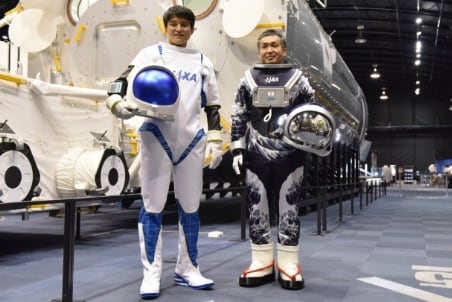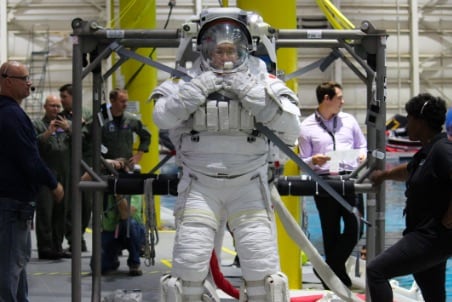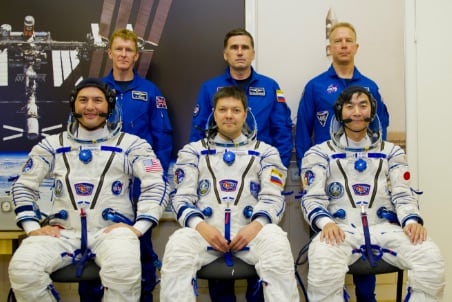Protecting the lives of astronauts with high-performance suits
that can withstand harsh environments
If a spacecraft away from earth were to suffer accident and loses onboard pressure, or during extravehicular activity outside the ISS, astronauts would find themselves in an environment where humans cannot naturally survive due to the extremely low gravity and vacuum of space. Space clothing, including pressure suits and EVA spacesuits, was developed to allow astronauts to safely carry out their missions in such environment. Here, we explore the secrets behind various spacesuits.

Special suits worn by astronauts
when traveling to and from space

Astronauts wear spacesuits when boarding the spacecraft. Following its Space Shuttle Challenger disaster in 1986, NASA determined that an emergency evacuation system for the crew was needed, and developed a so called orange suit (pressure suit) to be worn during launch and upon return to earth. The original version of the orange suit, Launch Entry Suit (LES), made its debut on STS-26 in 1988. The Advanced Crew Escape Suit (ACES), which was lighter, less bulky, and simply-made than the LES, was developed to reduce crew stress and fatigue, and made its first flight on STS-68 in 1994. Crew members wear the Russian Sokol spacesuits when boarding Soyuz spacecraft.
In 2020, the latest model pressure suits were used for the launch of the commercial spacecraft Crew Dragon. With features such as a helmet produced using 3D printing technology and touchscreen compatible gloves, these spacesuits are a far cry from previous pressure suits.
Protecting the lives of astronauts from harsh environments
with high-performance suits worn during extravehicular activities
When carrying out extravehicular activities, astronauts need to wear a spacesuit with various functions to protect themselves from numerous elements of the harsh environment, such as vacuum, heat and infrared radiation.
Two types of suit are used on the ISS: the Extravehicular Mobility Unit (EMU) developed by the USA and Orlan spacesuit developed by Russia.
Both have the functions of the Space Suit Assembly (SSA) which protects the astronaut's body and the Life Support System (LSS) which maintains the environment inside the spacesuit.

JAXA Digital Archives
Astronaut ONISHI Takuya talks about spacesuits
Functions of the American Extravehicular Mobility Unit (EMU)

The American Extravehicular Mobility Unit (EMU) consists of a hard upper torso, a lower torso assembly, gloves, a helmet, a cooling undergarment, a life support system, communication devices, and other components.
The hard upper torso, lower torso assembly, gloves, and helmet cover the entire body. Adding oxygen inside the suit protects the astronaut from the vacuum of space. For airtightness, insulation and other purposes, the spacesuit is made of 14 layers of material, including nylon, Dacron, aluminized Mylar (a polyester film layer), Gore-Tex and Nomex, and maintains an internal pressure of 0.3 atm.
A liquid cooling and ventilation garment with an 84-meter tube sewn into it is worn on the bare skin and prevents the astronaut’s body temperature from rising by circulating water through the tube.
The life support system removes carbon dioxide exhaled through respiration, provides oxygen, and acts as a radiator to release heat into space.
An astronaut working in a pair during EVA uses communication devices to talk to one’s counterpart and their crewmates inside the ISS as well as controllers back on the ground.
Astronauts also wear diapers during extravehicular activities, which can last more than seven hours and do not allow for bathroom breaks.
Orlan spacesuit
A Russian spacesuit with a short prebreathe protocol

The Orlan spacesuit is a Russian-developed life support system for astronauts during extravehicular activities. The internal pressure of the Orlan spacesuit is about 0.4 atm, which is higher than that of the EMU. This results in a short prebreathe protocol—the time that the EVA crew needs to wait after putting on their spacesuits so as to expel nitrogen from their bodies—of about 30 minutes.
Unless specified otherwise, rights to all images belong to ©JAXA






